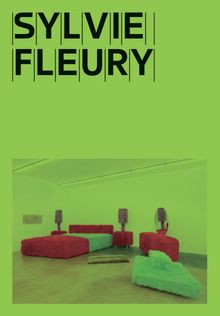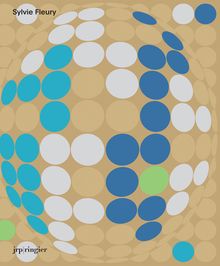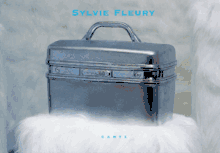ARTIST MONOGRAPHS
|
|
in stock $29.00 Free Shipping UPS GROUND IN THE CONTINENTAL U.S. |
 Sylvie Fleury: Bedroom Ensemble II
Sylvie Fleury: Bedroom Ensemble II
Published by MAMCO Geneva.
Edited by Lionel Bovier. Text by Thierry Davila, Ingrid Luquet-Gad.
Swiss mixed-media artist Sylvie Fleury (born 1961) has long been interested in depicting the juncture of materialism and materiality in contemporary consumer culture. Her 1998 installation Bedroom Ensemble II draws directly from soft sculpture artist Claes Oldenberg, who also created bedroom installations under the same title; through inconsistent scale and unusual textures, Oldenberg’s bedroom suggests a disconnect from reality that becomes more apparent the longer one studies the piece. Fleury’s piece amplifies and subverts such ideas with her own vocabulary of textures and colors. While Oldenberg’s bedroom is a particularly cold example of 1960s interior design, Fleury’s piece bursts with vitality, practically begging viewers to touch the colorful faux fur that covers every stick of furniture in the installation. This book is the first comprehensive study of Bedroom Ensemble II and its relationship to the other Fleury pieces in MAMCO Geneva’s collection.
PUBLISHER
MAMCO Geneva
BOOK FORMAT
Paperback, 6.25 x 9 in. / 64 pgs / 15 color / 1 bw.
PUBLISHING STATUS
Pub Date 4/20/2021
Active
DISTRIBUTION
D.A.P. Exclusive
Catalog: SPRING 2021 p. 113
PRODUCT DETAILS
ISBN 9781942884880 TRADE
List Price: $29.95 CAD $41.95 GBP £25.99
AVAILABILITY
In stock
in stock $29.95 Free Shipping UPS GROUND IN THE CONTINENTAL U.S. |
 Sylvie Fleury
Sylvie Fleury
Published by JRP|Ringier.
Edited by Samuel Gross. Text by Alex Gartenfeld, Samuel Gross, Simon Lamunière.
PUBLISHER
JRP|Ringier
BOOK FORMAT
Paperback, 9.25 x 11.25 in. / 160 pgs / 100 color.
PUBLISHING STATUS
Pub Date 12/29/2015
Active
DISTRIBUTION
D.A.P. Exclusive
Catalog: SPRING 2016 p. 126
PRODUCT DETAILS
ISBN 9783037644287 TRADE
List Price: $55.00 CAD $72.50 GBP £30.00
AVAILABILITY
In stock
in stock $55.00 Free Shipping UPS GROUND IN THE CONTINENTAL U.S. |
 Sylvie Fleury: 49000
Sylvie Fleury: 49000
Published by Hatje Cantz.
Edited by Gotz Adriani. Essays by Andreas Schalhorn, Ralph Melcher. Interview by Parker Williams.
PUBLISHER
Hatje Cantz
BOOK FORMAT
Hardcover, 7.5 x 11 in. / 184 pgs / 114 color
PUBLISHING STATUS
Pub Date 2/2/2002
Out of print
DISTRIBUTION
D.A.P. Exclusive
Catalog: SPRING 2002
PRODUCT DETAILS
ISBN 9783775710800 TRADE
List Price: $40.00 CAD $50.00
AVAILABILITY
Not available
STATUS: Out of print | 4/23/2003 For assistance locating a copy, please see our list of recommended out of print specialists |
PUBLISHER
Hatje Cantz
BOOK FORMAT
Paperback, 9.75 x 6.75 in. / 144 pgs / 132 color.
PUBLISHING STATUS
Pub Date 4/2/2000
Out of print
DISTRIBUTION
D.A.P. Exclusive
Catalog: FALL 1999
PRODUCT DETAILS
ISBN 9783893229734 TRADE
List Price: $24.95 CAD $27.50
AVAILABILITY
Not available
STATUS: Out of print | 11/15/2006 For assistance locating a copy, please see our list of recommended out of print specialists |


